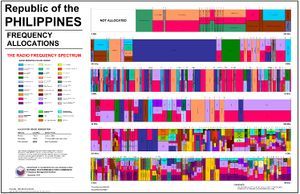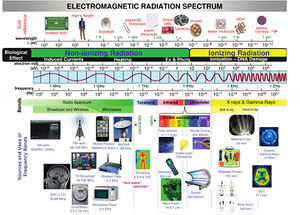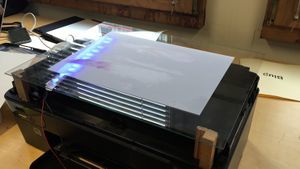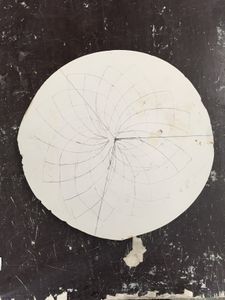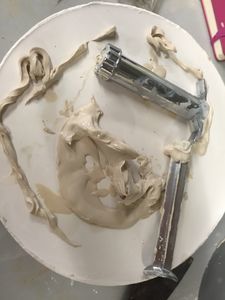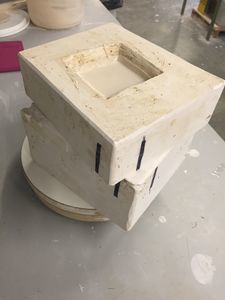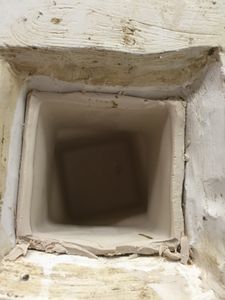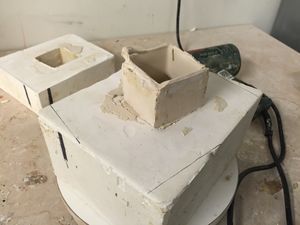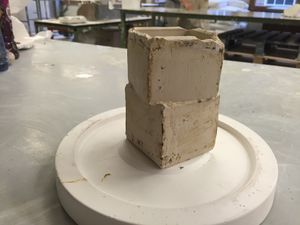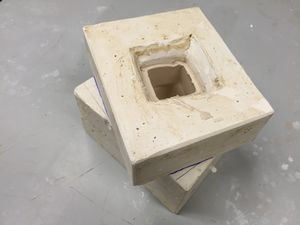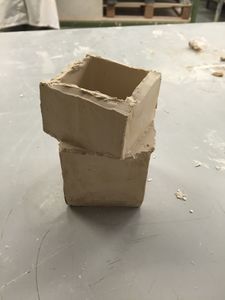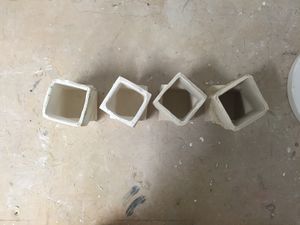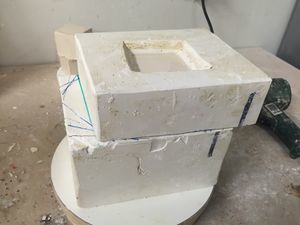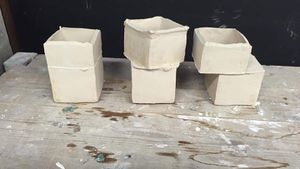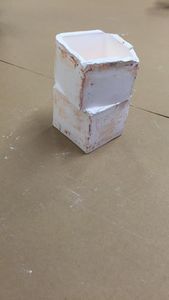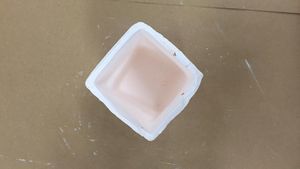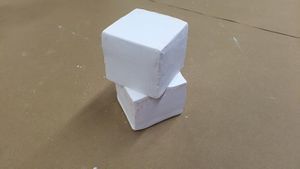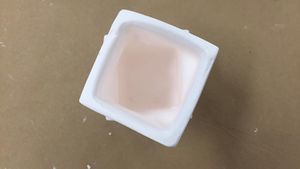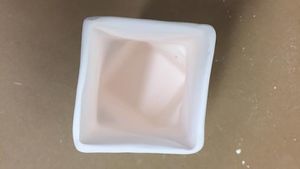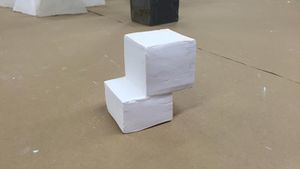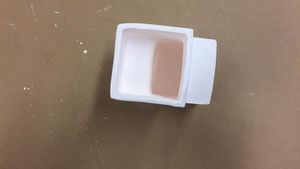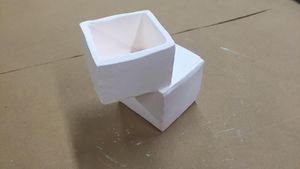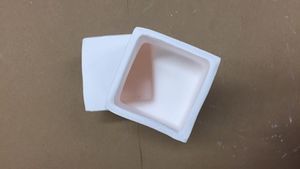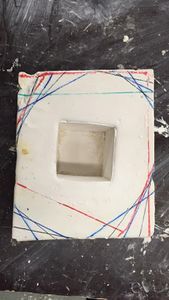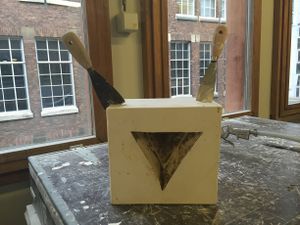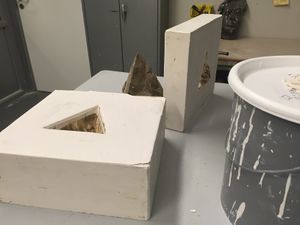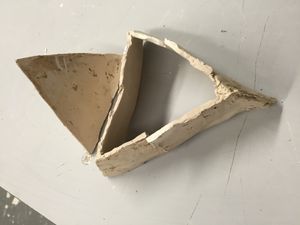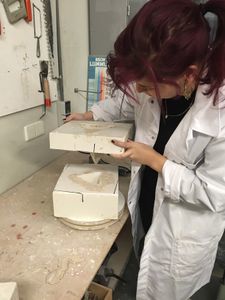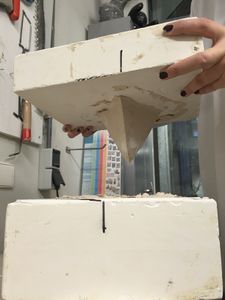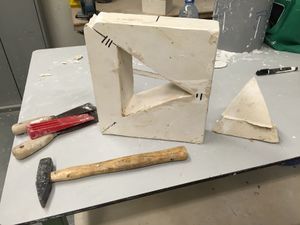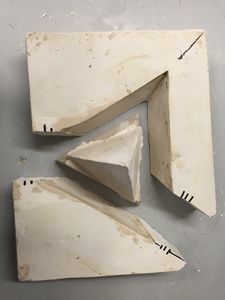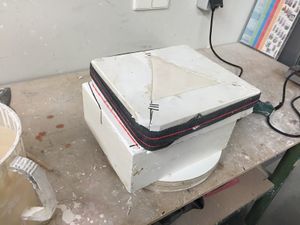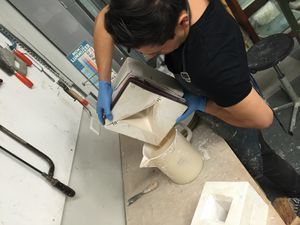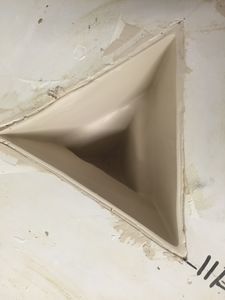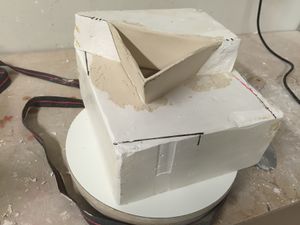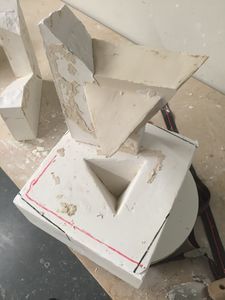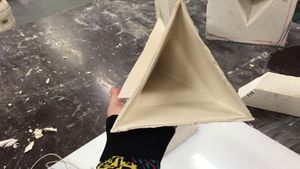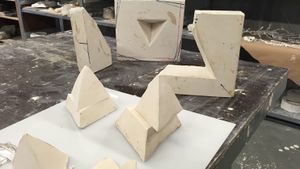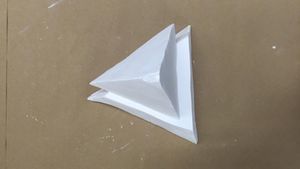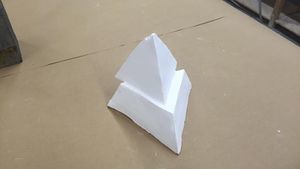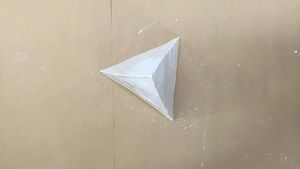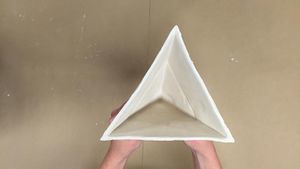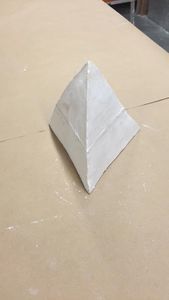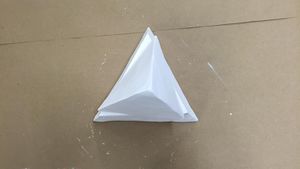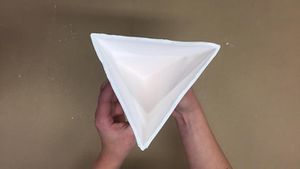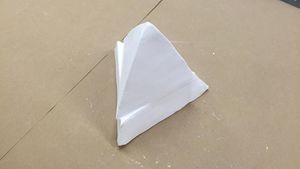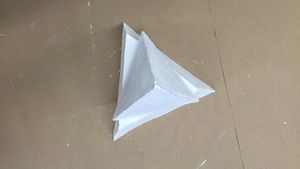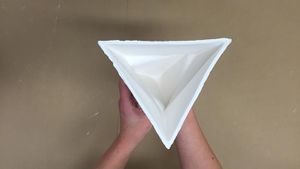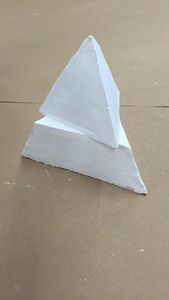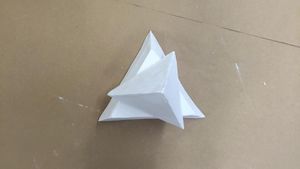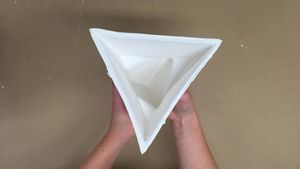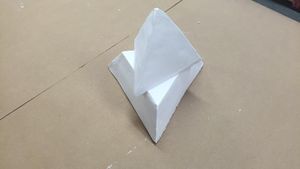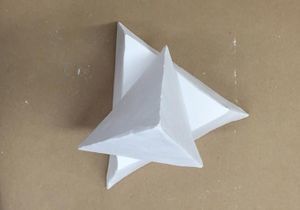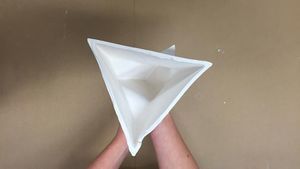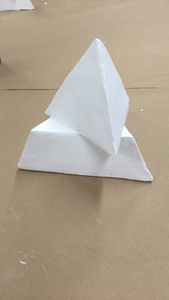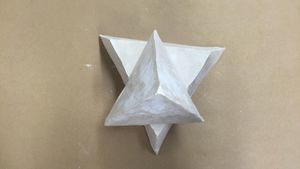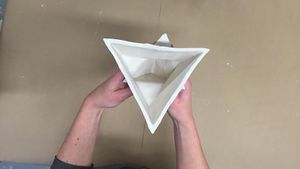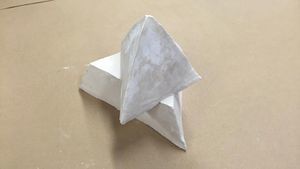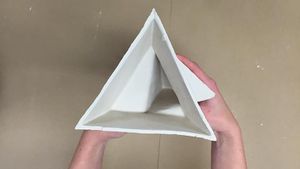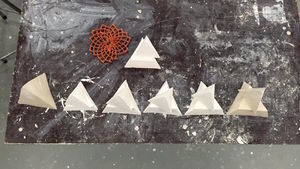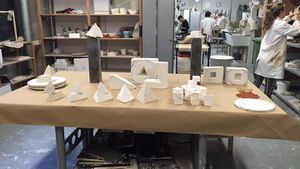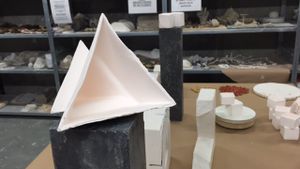User:Pascalle/RESEARCH DOCUMENT
Contents
- 1 Personal Statement
- 2 Experiencing the Minor
- 3 I'm 'Only' Human
- 4 Conlcusion
- 5 Planning Graduation
- 6 Sourcelist
Personal Statement
Experiencing the Minor
Introduction
Starting the minor I was curious and eager to work on collaborations, expand my knowledge on craft and the inner workings of technology. I wanted to learn how to inject a more critical view on technological advancements within my work. I anticipated some theory to evolve and elevate our works. Inspired and ready to be inspired, I began my Digital Craft journey. Digital craft is a minor that I felt from an early stage, suited my aspirations and work ethic, my interest and fascinations. With its critical note to society and technology and its appreciation for craftsmanship, I felt it was the right minor for me to grow. We had an intimate group of only 13 students, which overall created an easy and comfortable environment to work in, because it meant that we could really get to know our peers and the teachers. We worked within a set theme; The Radiation Spectrum. Biweekly projects, each focusing on a different asset of radiation, which meant to acquire skill, that could be applied in the final project. Radiation is all around us, electromagnetic processes that is surrounding us all almost everywhere we go, and is an essential part to many technologies that we depend on. With the exception of light, most electromagnetic processes are invisible to the human eye. This juxtaposition of exposing the everyday invisible made for very interesting projects, and gave us a lot of materials to work with.
SOUL OF THE MACHINE, ACOUSTIC RADIATION
Introduction
Our first assignment kicked of our minor theme Radiation. We were grouped at random and had less than two weeks to create a mini exhibition. My group consisted of Boris, Rens (Graphic Design) and Emma (Spatial Design).
Process
Together we started researching other artistic projects concerning the theme of Radiation, with various results, as the entire EM spectrum is very large. One thing we all agreed on was that we wanted to expose the EMR processes/ waves. Whilst researching, we stumbled on a tutorial, that transformed an ordinary tape recorder into an audio device that can detect EMR from any type of device that has a current running through it which it then transforms and emit the waves into sounds - hereby making the invisible, visible. The more we experimented with the tape recorder, the more excited we got. I had never really fully realised how digital our environment actually was. But the most interesting findings were the fact that each electronic device has its own unique sound. Something I did not expect. We all tried to approach this in a different manner, varying from visualization of the sound to mapping the different sounds. But due to our limited time, we decide to combine and focus our efforts on one single perspective. For the mini exhibition, we gathered all different types of electronic devices, and asked visitors if: “they’d like to go on safari?”. We really wanted people to experiment and explore for themselves the different sounds of EMR.
Conclusion
At the mini exhibition, it was exciting to see the reaction of so many viewers who went through the same amazement and surprise we went through. This invited people to form an easy dialogue with one another, which was really the main goal of our project. The project itself was completely out of my knowledge and comfort zone, but the process of discovery felt exhilarating.
EMR BODY JEWEL | ELECTROMAGNETIC RADIATION
Introducion
Next up was EMR. How do we ‘claim’ things that we can’t even see? This was the jumping off point for our project. After reading countless of charts in which different radiofrequencies, and who owned them. Its seemed absurd almost that, if you’re on a restricted FM, you will be charged with trespassing on property. For which the punishment ranges from a fine to jail time. This claiming of ‘invisible property’ seemed ludicrous, and it motivated us to try to evoke the same reaction in the public. To achieve this, we researched on how to create this reaction. First thinking of jamming signals in public spaces and then letting people pay, if they’d wanted to use their device. Not being completely satisfied we kept on doing more research, and we ended up changing direction towards a more privacy part (or rather the lack there of).
Process
Instead of working on the restricted areas, we researched further on big corporations capitalizing on humans. This is all possible due to personalized and customized advertisements for which personal data is needed. How this personal data is acquired is another matter, even our own government seems to be less and less strict on privacy policies. From facial recognition cameras in public transports to Facebook using advertisements based on your personal profile. There is no choice; you just have to give your rights away. Besides being surveillance by our digital environment, there are people that argue that the EMR waves have a negative effect on one’s health. Controversy has arisen again about whether holding a cell phone next to the head for too many minutes a day threatens the brain with electromagnetic radiation. The preponderance of evidence continues to indicate there is no threat. Many people do not realize, however, that we are increasingly surrounded by technologies that emit radiation in the same radiofrequency portion of the electromagnetic spectrum: Wi-Fi routers, Bluetooth transmitters and more.
As the graphic above shows, the radiation emitted in this region is non-ionizing: it may heat molecules in the body but does not ionize them (that is, set electrons free). Ionizing radiation, which can tear molecules apart and therefore potentially damage DNA—is the greater worry (Fischetti, 2012).
Concept We are all working towards something; contributing and being a "productive member of society". But are we? Are we master and creators of our own life? Or simply a cog in the machine, working and following the rules, the protocol and never seeing the end result? A OS that dictate our life, telling us what to buy, what to see, what to fee and who to follow. Am I being paranoid or am I observant? I care about what they tell us not to worry about. Don't worry, as long as you follow our rules, we will take care of you, we will keep you safe they promise. But are we being kept safe or being controlled? One thing is clear; privacy is becoming more and more of a luxury, and maybe in time the most valuable commodity.
Conclusion
We decided on making body jewellery for the niche group of people that were extra aware of EMR, and make you anonymous, protecting and obscuring the face and neck mostly. We research different materials and their densities properties, in order to find the most suitable material. We were also interested in using some similar techniques as that of a boat reflector (which bounces the EMR waves back). Unfortunately, due to our misunderstanding of the assignments we weren’t able to actually a produce a work. As I was also still working out of my comfort zone, I felt insecure and hesitant to actually start making.
EXPERIENCING THE EPHEMERAL | LIGHT RADIATION
Introducion
Still intrigued by the concept of revealing the “invisible” (to our eyes at least) we wanted to experiment with light in an unconventional way.
Process
After a few experimentations with the camera obscure and the light sensitive ink they use for silkscreen printing, we quickly discovered that the Graphic Station was in the possession of UV reactive ink. This ink was semi-transparent, but as soon as it was exposed by UV light, the ink seemed to “charge” itself and turn to purple (other colours are also available). Not only did we test the ink on paper, we combined the ink with polyester resin, polyurethane f18, Flex Foam, latex and silicon. To our delight we discovered that the ink remained its property, and created for interesting results. Enthralled by the aspects of this ink, and wanted to combine it with hacking a printer. The general idea was to have a message or pattern onto a semi-transparent piece of paper, by hacking the scanner, and adding a UV LED strip onto it, which would slowly make its way up and down which would reveal the “hidden” message and pattern. (test foto) We quickly came to realize that this was a more challenging feat than we had initially anticipated. So, we returned to our UV ink test, and from all of the materials, we were most attracted to latex, because of its eerily skin like properties, simultaneously we discovered a theory that suggested that the first cave drawing was made by a natural light projection which then the earliest people, traced. This idea of drawing with light, led us to make a large latex “screen”. For which we learned how to solder a frame, in which the screen would be suspended. We also created a glove to which UV LED lights were fastened (learned how to parallel solder). The finished product, had a reminiscence of a hide we realized a deeper meaning. A critical nod towards screens, and how we have forgotten the amount of technology it has taken to get to where we are today.
Conclusion
In a world where we are surrounded by digital screens, where everything is instant and can be saved forever, we challenged the perspective and let you experience the ephemeral. This need for being out of our comfort zone, and learning new techniques made us both almost not have a finished result we were content with. By combining new acquired knowledge and already set skills we were able to create a pretty surprising project.
HACKING THE CERAMIC MOLD | PATTERNS AND ALGORITHMS
Introduction
After being out of my comfort zone for a while, I wanted to explore the boundaries of my ceramic practice/knowledge and seek the limits of the material. I was slightly apprehensive and nervous since I didn’t quite know how to approach algorithms. After realizing that algorithms didn’t mean just equations, but also simply a process to achieve an aspiring goal, I started to recognize algorithms in everything, and realized that a lot of the ceramics procedure actually involves an algorithm. I wanted to alter the original formula to see what the outcome would be
Process
First experimenting with fluid clay to be my own printing machine. By using an icing bag, to create a phyllotaxis onto plaster. Bored and underwhelmed by the results, I considered other processes. Normally a mold has keys in order to anchor and grip the plaster mold pieces together and make sure they don’t move, in order to create a perfect replica. I wondered what would happened if you made it keyless and move the different mold parts. After my research came out empty handed I decided to test out my hypothesis. I started by creating a mold from a rectangular shape, since testing the theory didn’t require an intricate mold. I used an industrial blow dryer to heat up the mold to minimize the spillage of porcelain. After successfully pouring the first cast, I continued to rotate the mold by 7mm, until I the rectangular was set back again. I also experimented with sideways and random pouring, test the flexibility and find out what the other possibilities were. Due to the successful nature of these experiments, I decided to test the hypothesis on a more slightly intricate shape; a pyramid. This did prove more challenging, due to the fact that once rotated, the porcelain shape is stuck to the mold Which meant that I had to break open the mold, while the porcelain shape was still in it. After which I used suspenders to hold the pieces together.
Conclusion
This project, where I hacked the ceramic mold, surprised me the most, as it is a technique that has never been done before, to my knowledge at least. This caused excitement and made me very motivated to continue researching and perfecting this technique with different shapes for the final project.
